BLOG
How Much Does It Cost To Start A Dispensary & Craft Grow
Cannabis Legalization News – Thomas Howard Podcast Featuring Andy Poticha
Tom Howard: It’s clearly 2:00 p.m. on a Wednesday, and so it’s cannabis legalization news time. We’ve had a huge week in cannabis legalization news. Illinois became … hey Miggy … what number is it?
Miggy: 11!
Tom Howard: 11. The big number 11, and we also have a guest joining us. It’s Andy Poticha. Say hi, Andy.
Andy Poticha: Hello.
Tom Howard: Awesome. Well, we’re going to round up the news, and then Andy is going to discuss with us his unique knowledge about something that’s so hot right now. The cost of getting into a cannabis cultivation facility in Illinois. They’re called, The Craft Grows or a dispensary, but first, I think the biggest news of the week was of course that JB Pritzker signed it into law. Now, it’s number 11, but there’s been a lot of other really cool federal news, and Miggy have you heard anything on the west coast? Is there anything that you’re working on for weednews.co.
Miggy: No. Not me, per se. I mean state-by-state has been great also with New York and Texas and Ohio, but those are all more medical and one is decriminalization. The Banking Act.
Tom Howard: The Banking Act. I’m actually going to present to everybody, that’s another thing. So FinCEN did just release, and says that FinCEN publishes these on a quarterly basis, but of course it takes them a little bit of time to get the actual date. This came out this past week, and it’s current as of April 1. When the quarter ends here in about a week for June, these numbers will be updated and then FinCEN will publish that in another couple of months.
Tom Howard: But you can see the sharp uptick right there. Q3 2018. Basically JB Pritzker won, and then maybe this was also some New York thing. They don’t really publish those, but this is the number of banking institutions that are lending to marijuana. Interestingly enough, the thing that you see when you are lending to marijuana a lot, and hopefully my screen was on there, is –
Miggy: Hey, Tom.
Tom Howard: They file nondisclosure agreements and all that other stuff to kind of keep it secret, but this uptick, and a fairly large uptick according to the number of banks that are actually banking cannabis, somewhat corresponds to the stuff that’s been coming out of Congress. This is a really fresh news. This is from the Marijuana Moment, just from like a half hour ago.
Miggy: Oh nice.
Tom Howard: Right. And if you’re not familiar with what’s going on in the federal level, especially when it comes to banking and cannabis, it has to do with two things. One is the defunding of the war against marijuana for everything, not just medical, but state law marijuana. Second is the continuing pushing of the Safe Banking Act, placing it into the funding bills itself. As we get up the fiscal cliff, the fiscal cliff happens every year September 30 because that’s when the federal budget actually ends. The budget that will be passed that will continue to fund, that’s how hemp was legalized. That’s how the first war on marijuana was defunded back in 2014, through Rohrabacher-Farr Amendment just for the medical. It looks like the budget for 2020, plus Illinois going open for business, will really signal it’s time to go. It’s time to lend to cannabis businesses, and I would not be surprised if New York next year legalizes it. I think 2020’s going to be the biggest year for cannabis legalization ever. What about you, Miggy?
Miggy: No, I totally agree, especially since the House agrees to protect the legal states. That’s a huge step towards legalization, like you said. Just like jury nullification but in a financial way of how to attack prohibition.
Tom Howard: There’s jury nullification. That’s great, but you’re already being prosecuted. You’re on trial. Imagine if you could just stand up during a trial and be like, “Excuse me, Your Honor. There’s no money for this trial.”
Miggy: Yeah, yeah. That’s for sure. Defunding the war on drugs. I think that’s the best way to put it. FYI, when you had the chart on the screen, on YouTube, I was a predominant screen.
Tom Howard: That gets back to, I really need, and if anybody’s out there that is majoring in YouTube, and also social media SEO and has a paralegal degree, I will hire you because I am doing this all myself. And it’s sad. Somebody could be managing this, and then I could get back to work for the clients, which are just blowing up my phones. It’s going great, but that’s one of the reasons why we brought our guest on. He has actually designed and built cannabis facilities in Illinois. Andy.
Andy Poticha: Yes?
Tom Howard: How many of these facilities have you built?
Andy Poticha: In Illinois, we have completed four dispensaries and one cultivation, and are working on one cultivation and another dispensary at this point. That’s just in Illinois. We’ve been doing work in other states outside of Illinois as well. We’re working on our 8th state, actually.
Continue reading “How Much Does It Cost To Start A Dispensary & Craft Grow”
Success Story Part 2: Converting a Historical Restaurant Into The Greenhouse Dispensary
Part 1 of our Success Story focused on the historical journey of the restaurant bar that became the focal point of the Greenhouse Dispensary in Morris, Illinois. The story continues below, detailing how Cannabis Facility Construction fulfilled The Greenhouse’s vision of converting the Rockwell Inn into a dispensary, while honoring the restaurant’s legacy as a source of community pride.
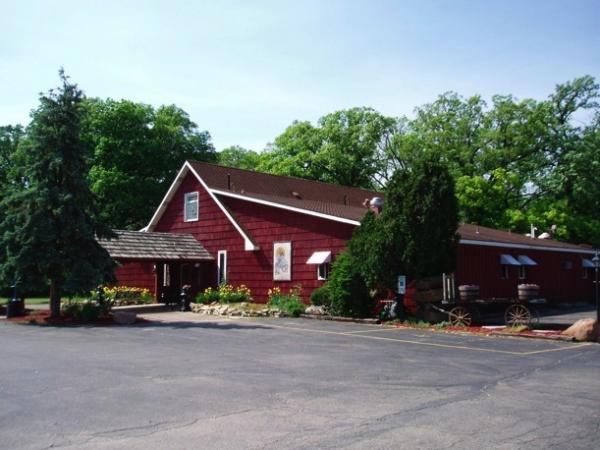
Not a Traditional Design-build Project
Converting a restaurant into a dispensary presented many challenges, including:
Earning the Trust of the Community
One of the biggest questions we faced was: How do we create the optimal retail space that is focused on the client while preserving the history of the old space? For us, a true partnership revolves around the trust and buy-in from all stakeholders. We were sensitive to the fact that we were introducing a new industry and purveyor to this jurisdiction. Showing respect for the community helped us achieve the buy-in we needed.
Wear and Tear
Given the age of the restaurant facility and its use, it was hardly in the same condition as buildings we previously worked with. For starters, it was a large, free-standing property with multiple additions created throughout its history. Some areas had concrete floors and others, wood floor joists. Often we’d encounter rotted wood and other material deterioration. Compared to a retail space, restaurants have unique issues like grease, dirt, and rodents that we don’t encounter when remodeling, for example, a clothing store inside of a strip mall.
Sewage Problems
We determined that the lot sat below street level, and consequently, the sewage had not been pumped into a lift station. We discovered that over the years, the restaurant only had band aids in place to address the problem.
Reclaiming the 150 Year-Old Bar
We had to figure out how to make this beautiful, legendary bar functional for staff and valuable to the customer experience. It now serves as the centerpiece of an open and comfortable space where visitors interact with budtenders and learn about the products.

Leveraging Our Trade Partners
We used a talented group of trades and suppliers to complete the project. Across the board–from plumbers, electricians, and millworkers to heating, flooring, life safety, HVAC, security and sprinkler system specialists – our trusted partners played key roles in the renovation.
It All Comes Together
The result of our renovation is 5,200 square feet of usable space, outfitted with an inviting waiting area and an open and comfortable shop with the reclaimed bar as its hub. Understanding, learning, and operating in buildings that are 50-150 years-old is where we cut our teeth. The whole idea of opening up walls, making discoveries, and maximizing value for our clients is what we live for. We’ll give the last word to Mitch Kahn, CEO and founder of Grassroots, a national leader in medicinal cannabis, and the parent company of Greenhouse: “It really is just a neat building with character that we wanted to keep, from the tin ceiling to the bar that’s over 100 years old, and retrofit it to our purposes. We saw the promise of remodeling an old building and turning it into a modern facility.”
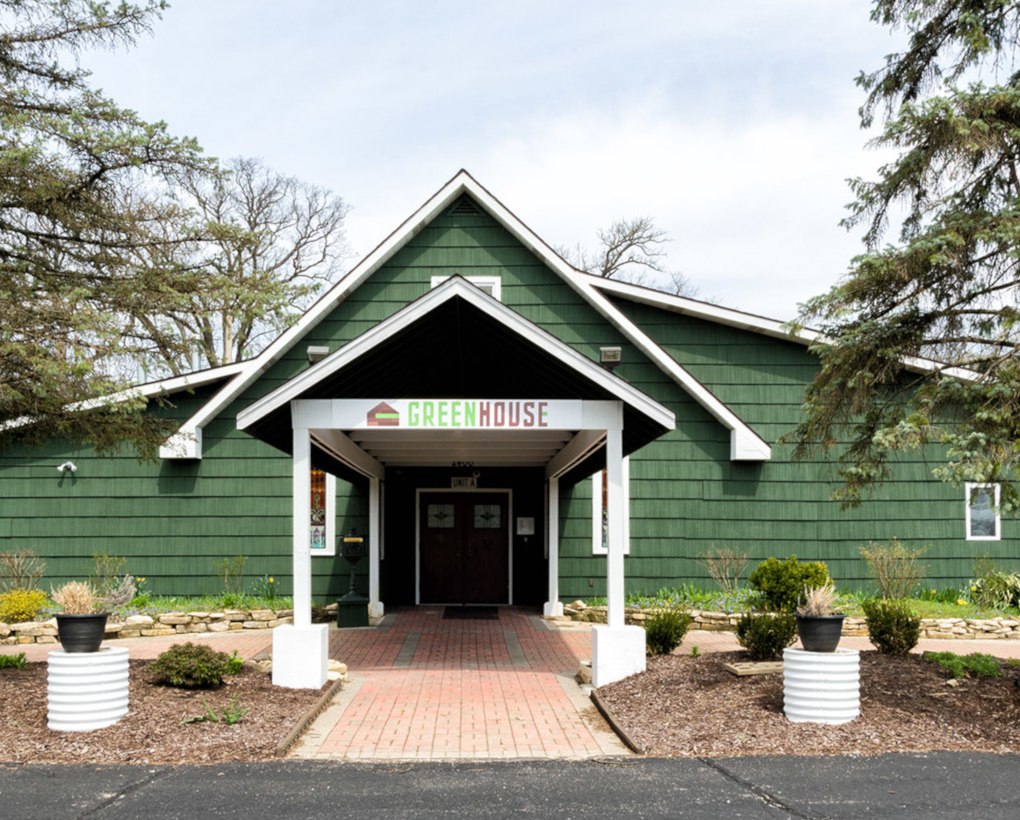
Illinois Recreational Cannabis: What You Need to Know
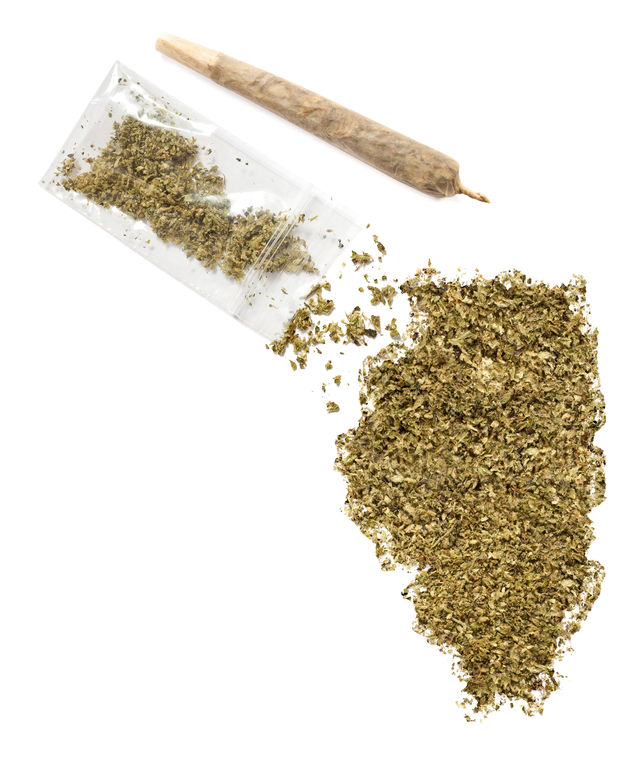
“In the interest of equity and criminal justice reform, I look forward to signing this monumental legislation,” said Illinois Governor, J.B. Pritzker, following the passage of House Bill 1438 on Friday, May 31, 2019. The 66-47 vote made Illinois the 11th state to legalize adult-use cannabis and the first to do so through the state legislature. Vermont’s program was approved through its legislature but does not permit commercial sales. Approval in other states occurred via referendum.
The bill, which passed 38-17 in the state Senate two days earlier, focuses on social equity and addressing Illinois’ financial deficit. Chicago Crain’s Business reports that, “Illinois expects sales to eventually reach $1.5 billion to $2 billion a year, producing $500 million in revenue for the cash-strapped state.”
Following the November, 2018 midterm elections, we commented on what Governor Pritzker’s election victory would portend for the future of cannabis in Illinois. Once he signs the bill, it will be the law of the land.
Here’s what you need to know about the new law:
Growing and Selling
Recreational sales will begin on January 1, 2020, with priority given to businesses with current medical licenses. They will be eligible to start cultivating, producing, and selling cannabis for retail use.

According to the Chicago Tribune, “Only the 20 existing licensed medical marijuana cultivation facilities will be licensed to grow it initially. Next year, craft growers may apply for licenses to cultivate up to 5,000 square feet, with preference given to applicants from minority areas disproportionately affected by the war on drugs, such as the South and West sides of Chicago. Medical marijuana dispensaries and new retail stores will be licensed to sell it.”
Buying
The bill allows for Illinois residents 21 and older to possess up to 30 grams or roughly one ounce of cannabis flower or bud. They are also allowed five grams of cannabis concentrate or 500 milligrams of THC in a cannabis-infused product. Adults visiting the state can possess up to 15 grams of cannabis. Growing plants at home will remain illegal except for certified medical patients.
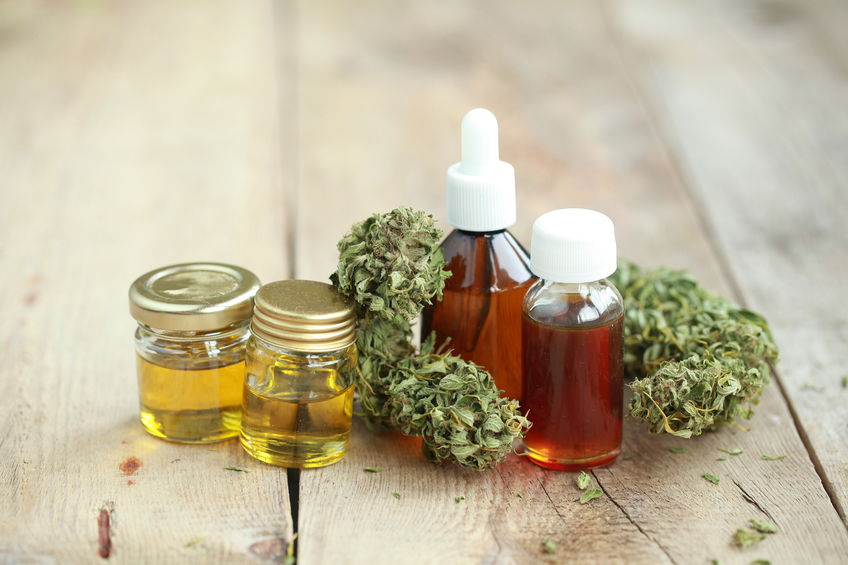
Impact on Convictions
Central to the bill was the expungement of cannabis convictions.
“While the usage of cannabis has been the same across all racial groups, the actual incarceration charges have been shown to be seven times more likely for people of color than Caucasians,” said Illinois State Senator. Heather Steans (D-Chicago), the Senate bill’s main sponsor. “This bill is going to set the model, I believe, the gold standard, for how to approach social equity issues related to cannabis legalization.”
Here’s what’s at stake for convicted felons, according to the Chicago Tribune: “The governor will pardon past convictions for possession of up to 30 grams, with the attorney general going to court to expunge or delete public records of a conviction or arrest. For possession of 30 to 500 grams, an individual or a state’s attorney may petition the court to vacate and expunge the conviction, but prosecutors may object, with a judge to make the decision.”
Taxation
Per ABC News and the Chicago Tribune, consumers will be taxed in the following way:
- A 10% tax will be levied on cannabis products containing less than 35% THC
- 20% for cannabis-infused products like edibles
- 25% for THC concentrations of more than 35%
Additional state and local taxes apply and can be as high as 9.75%, including:
- 3% municipality
- 3.75% county in unincorporated areas
- 3% in Cook County (Chicago)
Opting In or Out
Similar to other adult use programs, local governments may opt in or out. According the Chicago Tribune, “Municipalities and counties may ban cannabis businesses within their boundaries, but may not ban individual possession. Any person, business or landlord may prohibit use on private property. Colleges and universities may continue to prohibit marijuana use.”

Where You Can and Cannot Consume
Usage at home is permitted as long as it’s out of view of the public. Places where use is strictly prohibited include: public areas, school grounds, in any motor vehicle, in a correctional facility, around someone under 21, while driving a boat or flying a plane, or by a school bus driver, police, fire or corrections officer while on duty.What Else?
Cannabis remains a Schedule 1 illegal drug by the federal government; however, federal law enforcement tends not to prosecute possession of small amounts or businesses complying with state programs.
Medical cannabis was also a winner at the eleventh hour of the legislative session. The House passed the bipartisan SB 2023, which will make the Compassionate Use of Medical Cannabis Pilot Program Act permanent while broadening its scope. Illinois State Representative Bob Morgan’s (D) reauthorization bill removes the program’s July, 2020 sunset and adds more patient qualifying conditions, including chronic pain and autism.
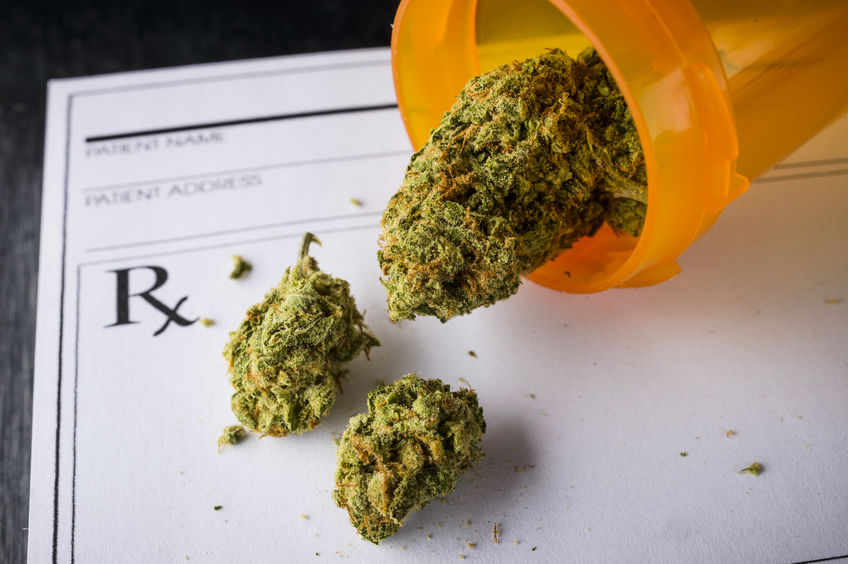
The bill also permits advanced practice nurses and physician assistants to recommend medical cannabis in addition to physicians and increases the number of caregivers that patients can use to access the program. Similar to the adult-use program, the reauthorization bill emphasizes equity standards and will award five dispensary licenses to ensure equal opportunity.
“It is critical for the state that the pilot program be reauthorized and revised,” said Morgan in a press release. “The initial program placed a significant regulatory burden on patients. With the passage of SB2023, the new program will streamline the process and help patients suffering from debilitating medical conditions.”
The Essential Staff of a Cultivation Facility
At the conclusion of many a cannabis customer’s journey is consumption of the product. Whether that method is smoking, vaping, ingesting, or topically applying the product, how it arrived on or in your person traces back to the cultivation facility where it was farmed, grown, and groomed. Dispensary shelves and display cases are bedecked with flowers, oils, extracts, shatter, edibles, and more, but none of that exists without cultivation. Canna-business is the fastest growing sector in the country due in large part to the essential staff of cultivation facilities.
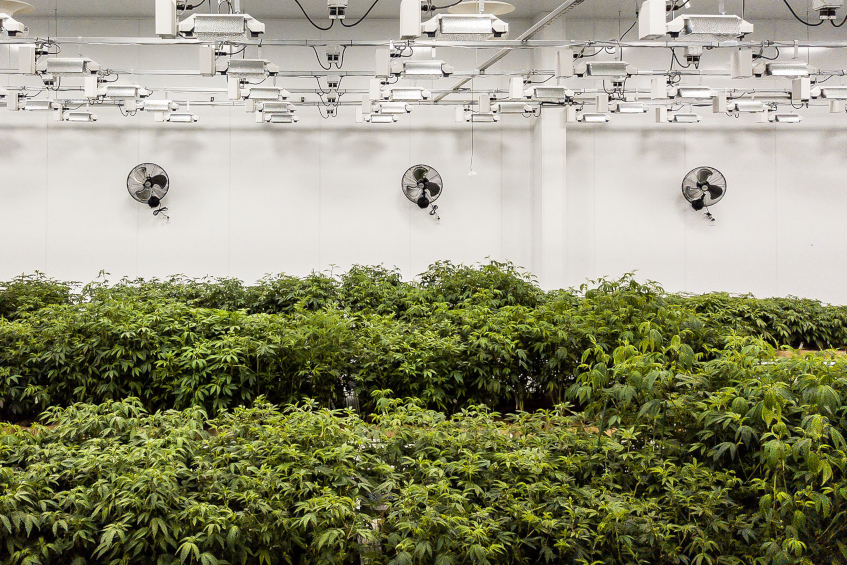
Master Grower and Junior Grower
A successful cultivation operation starts at the top with the master grower, whose credentials include backgrounds in horticulture or agriculture and often advanced degrees. Also known as director of cultivation, this person is not only responsible for overseeing the cultivation of all cannabis plants, but managing the entire operation of the facility. They are in charge of all grow house employees and must routinely ensure that the facility is in step with regulations. It may not stop there.
As CNBC reported, “At larger operations, cultivation directors have management responsibility for a team of growers, and the position typically requires frequent interaction with law enforcement to ensure compliance.”
A junior grower or a master grower-in-training, works directly under the tutelage of the master grower. This person is primarily responsible for successfully growing the plants. Duties include planting, cloning, feeding, and proper watering.
Trimmers and Technicians
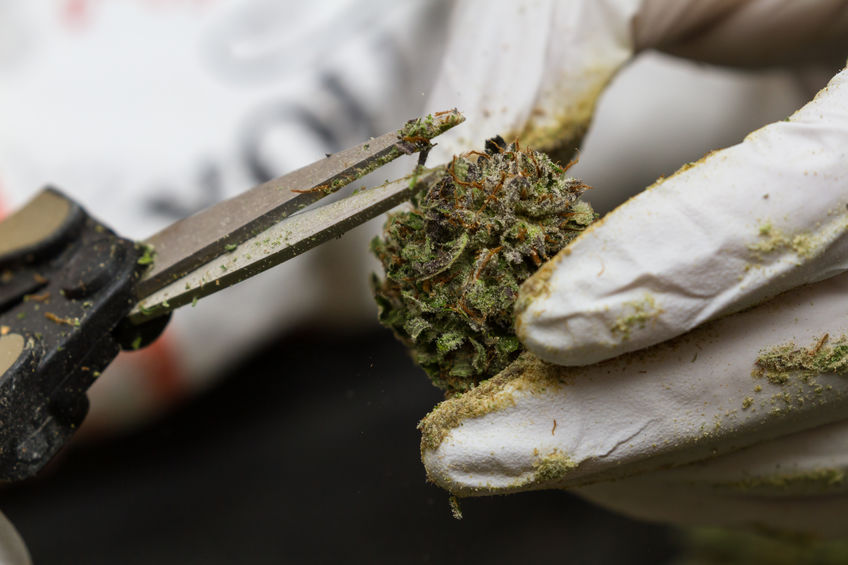
They call it a plant-touching niche for a reason. Trimmers have direct contact with cannabis plants, and their job is to prune and manicure the plants during harvest season without harming them. Trimmers are tasked with understanding the plant anatomy and the difference between strains. The job requires physical endurance and concentration. “Bud trimmer is an excellent entry-level job,” writes James Yagielo of Hemp Staff. “It’s a great way to break into a marijuana cultivation career with plenty of room for upward mobility.”
Similar to trimmers, cultivation technicians handle pruning duties, but they are more focused on the fulfillment of growing cannabis, including germination, cloning, and transplantation. Quality Control Inspector QC Inspectors ensure that cannabis products comply with health, safety, and potency standards. Many in the field are PhD’s in biology, agronomy, chemistry, or entomology and often
help inspect and enforce marijuana cultivation laws and regulations, as well as those that apply to the use of pesticides.
Director of Extraction
The function of processing or converting the raw materials of cannabis into usable forms, may take place under the same roof as cultivation, especially with companies that practice vertical integration. Extraction falls under the processing umbrella and is the method for turning cannabis buds into oils and concentrates for vaping. The Director of Extraction typically has a solid background in pharmacology or chemistry and designs and runs processing, including laboratory functions and the management of extraction staff.
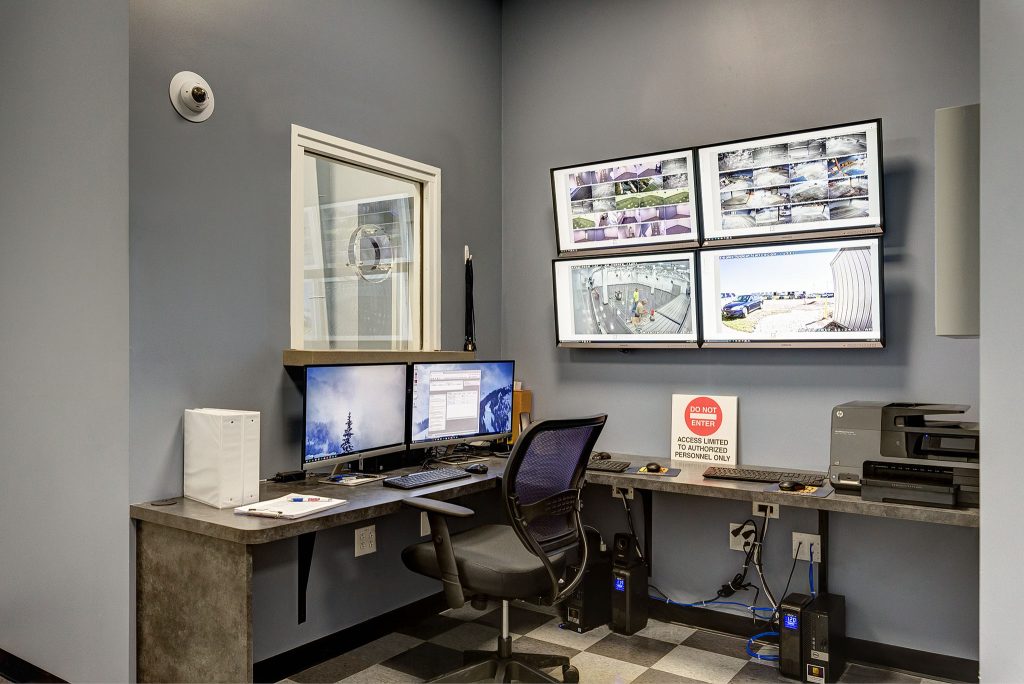
Conclusion
Cannabis employment increased nearly 700 percent between 2017 and 2018 and is projected to grow another 220 percent in 2019. Legal cannabis was a $9 billion industry in the United States last year and will balloon to $21 billion per year by 2021. Cultivation is where everything begins thanks to staff with the unique skill set to make it happen.
Fire Proofing Your Cannabis Facility

Earlier this year, Politico published a story on the outbreak of fires and explosions at Cannabis extraction facilities. It documented 10 incidents over the last five years where hash oil was being extracted. The reporting shed light on the risks involved in the process: “Extracting hash oil from cannabis is dangerous because typically it requires pouring highly-flammable butane or some other volatile solvent into a cannabis-filled pipe,” according to the story.
These accidents, sometimes deadly, serve as a cautionary tale for one of the fastest growing industries in the country. As Politico notes, “…labor unions complain that state governments are moving too swiftly to license producers, outpacing the states’ ability to inspect production facilities for potential safety violations.”
We’ve previously written about the significance of physical and cyber security for cannabis businesses, and here we discuss the importance of fire proofing your cannabis facility.
Get Educated
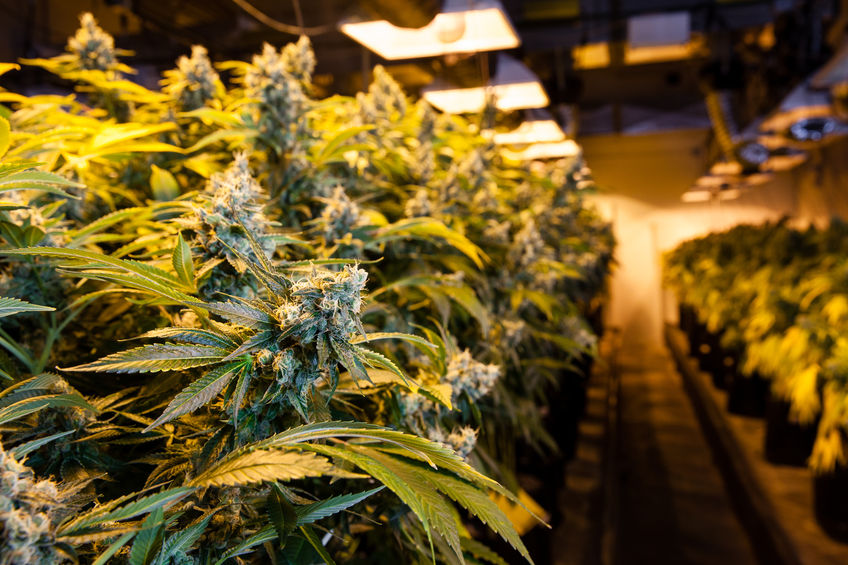
In the rush to keep up with the demands of growing markets, cannabis facility owners need to take a step back and ensure they have safety protocols in place. This is especially challenging for two reasons: 1) safety compliance is determined at the state level since cannabis remains federally illegal, and 2) “Most of the states where marijuana is legal offer no safety and health guidance for the new industry,” according to Politico. “The National Institute for Occupational Safety and Health, which researches work-related injury and illness, has conducted only two hazard evaluations of legal marijuana facilities, neither of which focused on the extraction of hash oil.”
“Even in those states that do offer safety and health
guidance — Colorado, California, Michigan, Oregon,
and Washington — fire safety officials complain that
worker safety protections are often inadequate.”
Still, business owners can educate themselves and their employees by engaging with their local fire department so that they are in step with fire code, permitting, and inspections.
Speaking of which…
Seek Permits and Inspections
Mark de Souza, CEO of Chicago-based Revolution Enterprises, recently warned of the pitfalls of the cannabis industry’s growth outpacing regulation. “I have long thought the best way to help Illinois citizens deal with this change is to ensure the industry grows in tandem with the state’s ability to regulate it,” he wrote in Crain’s Chicago Business. “And by ‘regulate it,’ I mean ensure that its use remains safe…Creating a new and unregulated market overnight—in a business that some citizens find unusual and scary—seems the easiest way to ensure its failure.”
An area related to this concern is acquiring the requisite permits and scheduling routine inspections to protect facilities. In the last year, the National Fire Protection Association (NFPA) updated its fire code to address these issues. Per Politico “The revised code requires any hazardous hash-oil extraction process to be performed in a non-combustible room, in a building that contains no child or health care facilities. Staff must be trained on safe operation of the extraction equipment, and the extraction room must be equipped with a gas detection system and multiple fire extinguishing systems.”
Utilize a Closed Loop System
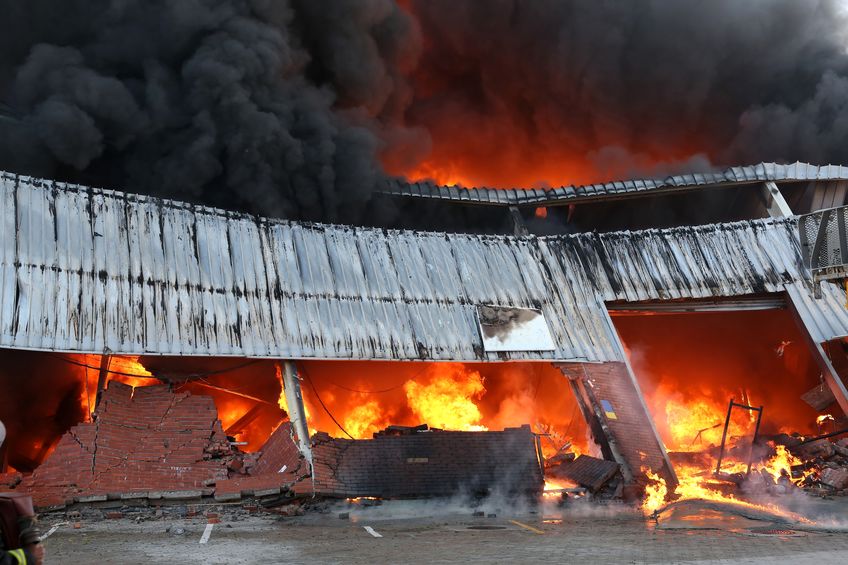
Cannabis or hash oil extraction via a closed loop system is the safest method. Compared to open blasting, which uses flammable solvents, closed loop systems contain these in extraction cylinders. Open blasting, dangerous as it is, is not uncommon and has resulted in devastating accidents. In June of last year, an extraction facility in Millcreek, Utah exploded, and two people experienced severe burn injuries in Sonoma County, California while extracting hash oil by open-blasting. Closed loop is only safe if strictly adhered to. Marijuana Venture advises following the manufactures’ instructions for equipment to a T and being vigilant about every detail, like routinely tightening bolts on extraction cylinders.
Don’t Do it Yourself
Some cannabis facility owners and operators skirt safety and compliance checks to be operational faster. In addition to obviously violating the law, this can create hazardous conditions, especially where electrical systems are concerned.
“Where necessary, hire a professional,” advises Marijuana Venture. “Building, fire and electrical codes must be followed. Don’t overload the electrical panel. Don’t steal power from a nearby building. Be careful with wall construction. Pay attention to door sizes. And perhaps most importantly, everything should be properly permitted.”
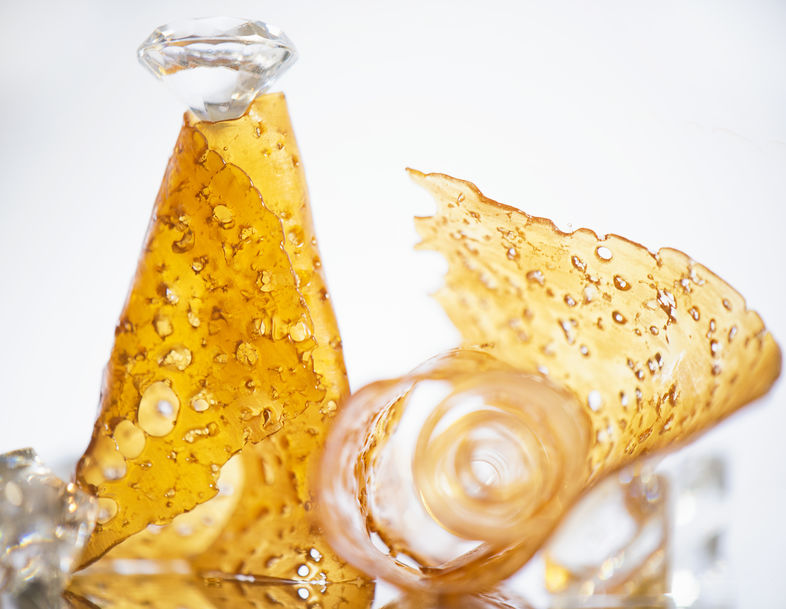
Recourse
Cannabis businesses are on notice and have suffered financial and legal consequences. California and New Mexico’s occupational safety and health agencies issued fines of $50,470 and $13,500, respectively, against a cannabis manufacturer and processor for explosions that occurred at their facilities. Felony charges were brought against an Oregon business owner whose employees sustained burn injuries following an incident.
In addition to NFPA’s increased efforts, labor groups in states considering cannabis legalization are advocating that labor peace provisions requiring marijuana processors to ease the path to unionization be incorporated into legislation. Other states like Rhode Island and Arizona are weighing making extraction against the law altogether. Either way, there are enough resources and education to mitigate the risks of fire at your cannabis facility.
Success Story Part 1: A Bar’s Origin and Journey
If a bar’s walls could talk, you could imagine the stories it would tell. The secrets, truths, tales, and a mix of all three from patrons, bartenders, cooks, and other staff remain trapped under layers of paint, trying to escape unsuccessfully through the cracks. But every now and then, there’s a special bar with a classic design, heft, and durability that embarks on an epic journey. It’s the kind of bar you see once in 125 years, about to celebrate its Quasquicentennial. It doesn’t need to rely on walls to tell stories because the bar is the story.
This bar’s story is told in four acts, beginning in the big city of Chicago in the late 19th Century and continuing down-state to this very day.

Act 1: The Origin
When you consider the bar’s roots, it makes sense that it was destined for longevity. Anheuser Busch Co. commissioned the bar in 1882, which was designed and built by Brunswick Balke-Collender. The TIMES-PRESS of Streator, IL, described it as, “…a splendid oak and brass structure with intricately carved detailing that measured 14 feet high by 30 feet long and featured 13 electrified gas lights with three sections of mirror and colonnades. The front bar had a copper foot rail and a marble base.”
Anheuser Busch was impressed enough to display the bar at The World’s Columbian Exposition in Chicago in 1893 where it resided in the company’s pavilion for the Fair’s year-long run. When the Fair concluded, sponsors of the exhibits sold displays and showpieces. A barkeep by the name of John Trapp purchased the bar and had it transported by Anheuser Busch’s famed Clydesdale horses some 100 miles away to the small industrial town of Streator and placed in his saloon, Trapp’s Tavern.
___________________________
It’s the kind of bar you see once in 125 years, about to celebrate its Quasquicentennial. It doesn’t need to rely on walls to tell stories because the bar is the story.
___________________________
Act 2: Trapped
At the time, Streator had a prolific coal and manufacturing industry and was known as a midwestern railroad hub. Business was good at Trapp’s Tavern, located on Main Street, and the new bar, fresh off it’s run at The World’s Fair, attracted many patrons. According to the TIME-PRESS, the one beer served was Anheuser Busch, and one story reports the kitchen cooked only roast beef sandwiches, while another adds navy bean and chicken noodle soups, and ham sandwiches. Every account, though, notes, “One of the pieces Trapp purchased with the bar was a ‘women’s room’, which was a 15-foot by 15-foot oak and glass walled cubicle where women sat waiting until their men had their fill in the saloon.”

Act 3: Moving Inn
After an 82-year run, the legendary Trapp’s Tavern went out of business, but the allure of the bar grew stronger. Much like the previous century all those decades ago, a new face purchased the bar and gave it a new home. On June 27, 1976, Victor Anderes of Peru, Illinois bought the bar at auction for $26,000. Trapp’s Tavern and the renowned bar went out in style, as an estimated crowd of 200 people from as far as California, Colorado, and Florida gathered for the event. Anderes, a restaurateur, moved the bar to his new business, the Rockwell Inn in Morris, Illinois, 38 miles to the north east.
Recognized more than ever as a marvel of craftsmanship and utility, the bar was installed as the focal point of the new space. Anderes paid homage to its history, naming the room it resided in “The Columbian Exposition Lounge”, while defiantly renaming the former “Women’s Room” the “Not for Women Only” room. The bar even survived a major fire in 1985 because it was somehow shielded from the flames by the tin ceiling that collapsed on it.

Act 4: Greener Pastures
In 2013, the Rockwell Inn shuttered its doors, presumably ending the bar’s intrastate historical journey. This time there were no post-World’s Fair buyers or auctioneers, bidders, or Clydesdales to move the bar to its new home. Finally, the bar had succumbed to its final chapter.
Or so the city of Morris thought.
The forces of change, innovation, entrepreneurship, and nostalgia are powerful enough to revitalize a relic. On August 1, 2013, Illinois enacted the Compassionate Use of Medical Cannabis Pilot Program Act. In 2014, Chicagoland-based Grassroots Cannabis launched and soon engaged Cannabis Facility Construction to design-build its new Greenhouse dispensary in Morris, using an existing space once called the Rockwell Inn. Converting an old restaurant into a medical cannabis dispensary would present many challenges, but one thing was crystal clear: that sleeping, history-weary bar would make its greatest comeback yet.
Read More: Success Story Part 2: Converting a Historical Restaurant into the Greenhouse Dispensary
References
McCullough, D. (1987) ‘World’s Fair flavor found in old bar furniture’, TIMES-PRESS, Streator, 29 July
(1983) ‘Main Street Trapp’s has long history in Streator’, TIMES-PRESS, Streator, 12 May
(1976) ‘Purchases Trapp’s Bar For $26,000’, TIMES-PRESS, Streator, 28 June
How to Safeguard Your Cannabis Business from Cyber Threats
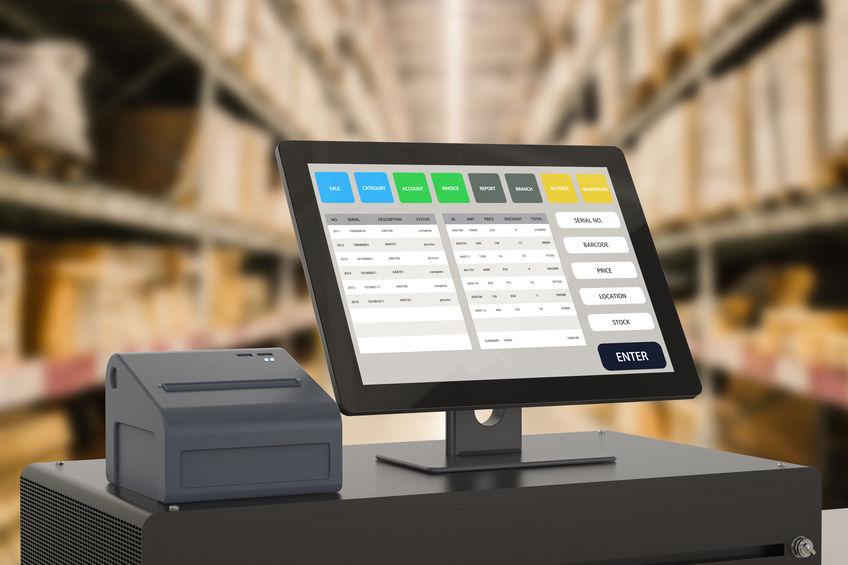 The cannabis industry had a banner year in 2018, highlighted by Canada becoming the second country to pass national legalization, the Farm Bill lifting restrictions on the commercial farming of hemp, and more states expanding their recreational and medical cannabis programs. Unfortunately, the intersection of innovation and growth has been tainted by cyber attacks. Notably, the Ontario Cannabis Store, an online retailer and wholesaler, and Denver-based software firm, MJ Freeway, experienced major data breaches. We’ve discussed security best practices for your dispensary, and now we examine how to safeguard your cannabis business from cyber threats.
The cannabis industry had a banner year in 2018, highlighted by Canada becoming the second country to pass national legalization, the Farm Bill lifting restrictions on the commercial farming of hemp, and more states expanding their recreational and medical cannabis programs. Unfortunately, the intersection of innovation and growth has been tainted by cyber attacks. Notably, the Ontario Cannabis Store, an online retailer and wholesaler, and Denver-based software firm, MJ Freeway, experienced major data breaches. We’ve discussed security best practices for your dispensary, and now we examine how to safeguard your cannabis business from cyber threats.
Have an Airtight Point of Sale System
The hardware and software combination that centralizes your business operations makes POS systems prime targets for hackers. The data stored in POS systems contain valuable and sensitive customer, employee, inventory, and operational information. Invest the time with your POS vendor to fully understand security coverage used to protect your data, their servers, and the privacy of your patients.
“There is an enormous incentive for hackers to target our young and immature industry…”
Ensure all Integrated Systems are Secure
While POS systems are one entry point for hackers and ransomware, so are the openings created by integrated systems. Cannabis businesses often use POS, Business Management, and Enterprise Resource Planning (ERP) systems together. It’s a best practice, but it also provides hackers with a low barrier of entry into your data. Protect vulnerable business data by sealing any security gaps during the integration process.
Hire an Independent Cyber Security Expert

Go all in by hiring a third party to ensure security across the board. If recent history is any indication, cannabis businesses will continue to be vulnerable to data breaches–leaking tax records, social security numbers and citizenship information–that can have devastating bottomline and reputational impacts. The right cyber security provider will not only ensure compliance, but also proactively protect your customers and investment.
Conclusion
Burgeoning cannabis businesses recognize that with great success comes great risk. In the race to ensure regulatory compliance and business growth and sustainability, protecting your operational data must be a top priority. Dr. Moe Afaneh, COO of BioTrackTHC, sums it up nicely: “Cannabis businesses are literally gold miners [sic] in the sense that their software data will define the future of this industry and their success. There is an enormous incentive for hackers to target our young and immature industry, which is why the last thing you want to do is make it easy for them.”
Israel’s Contribution to Cannabis Innovation
 Medical cannabis has been legal for only ten years in Israel, but the country is widely considered the global leader in cannabis innovation. It started back in 1964 when Israeli chemist and “Godfather of Cannabis Research”, Dr. Raphael Mechoulam discovered Tetrahydrocannabinol (THC) and the body’s endocannabinoid system, the largest receptor system in the human body. Mechoulam’s breakthrough is credited with legitimizing the scientific study of cannabis, but Israel’s contribution to cannabis innovation has not stopped there.
Medical cannabis has been legal for only ten years in Israel, but the country is widely considered the global leader in cannabis innovation. It started back in 1964 when Israeli chemist and “Godfather of Cannabis Research”, Dr. Raphael Mechoulam discovered Tetrahydrocannabinol (THC) and the body’s endocannabinoid system, the largest receptor system in the human body. Mechoulam’s breakthrough is credited with legitimizing the scientific study of cannabis, but Israel’s contribution to cannabis innovation has not stopped there.
Global Leader in Cannabis Research
Currently, there are more clinical trials in Israel than any other country. Not only does Israel have a government-sponsored cannabis program, it also boasts the world’s highest percentage of financial resources devoted to research, with much of the funding coming from the U.S., Canada, Australia, and Germany, where federal laws obstruct research and trials. Since cannabis remains a Schedule 1 narcotic in the U.S., American companies and organizations have been outsourcing their research to Israel. For example, the National Institutes of Health has funded Mechoulam’s research for the past 50 years, providing an average of $100,000 a year to study the medicinal benefits of cannabis.

Ground-Breaking Autism Study
Israel further highlighted the efficacy of medical cannabis for the treatment of autism. A recent study conducted by Ben-Gurion University of the Negev and Soroka University Medical Center showed promising results. 188 patients treated with cannabis oil reported significant improvements in quality of life and mood. According to the Jerusalem Post, “A good quality of life, which was reported by 31.3 percent of patients prior to treatment initiation more than doubled to 66.8 percent at six months. Positive mood moved up to 63.5 percent from 42 percent after six months. Good sleep, reported by only 3.3 percent of patients, shot up to 24.7 percent, and concentration went up from zero percent to 14 percent during active treatment.”
__________________________
Israel boasts the world’s highest percentage of financial resources devoted to cannabis research.
__________________________
Penetrating the U.S. Market
Seizing on the expansion of medical cannabis programs here, Israel is investing in U.S. markets. Tikun Olam, the first licensed medical cannabis provider in Israel, currently offers its proprietary oils, tinctures, topicals and other delivery forms in Delaware and Washington state, and will be entering California and Florida next. The company has been testing 32 genetically unique strains of cannabis for help with cancer side effects, autism, Crohn’s disease, active Parkinson’s, Tourette’s, Fibromyalgia, and complex motor disorders. Since the importing of cannabis into the U.S. and transport across state lines is illegal, Tikun Olam is investing in infrastructure in these states where its products can be grown, processed, and sold.
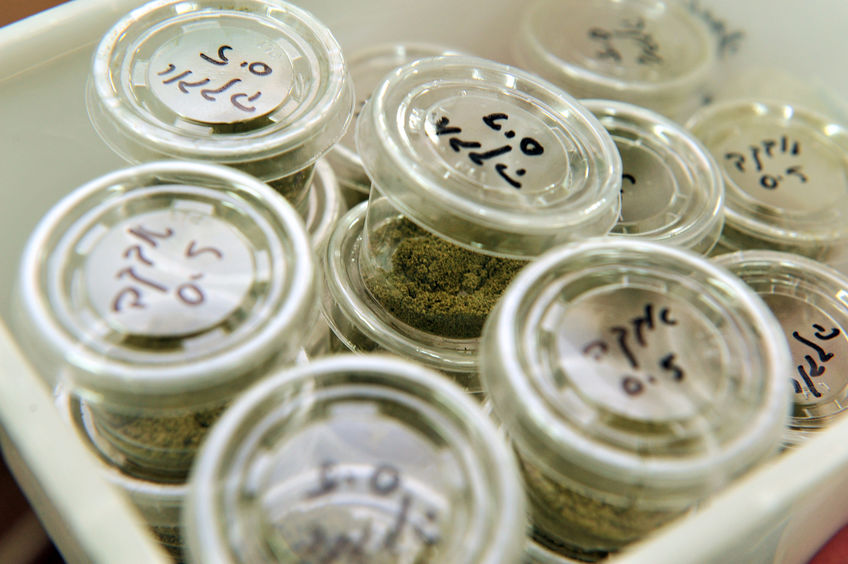
The Latest
In January, the Israeli Cabinet approved a law permitting the export of medical cannabis, following a parliamentary approval in December of last year. Along with the Netherlands and Canada, Israel is now the third country in the world to allow the medical cannabis product-exportation.
Oklahoma is Good for Cannabis Business
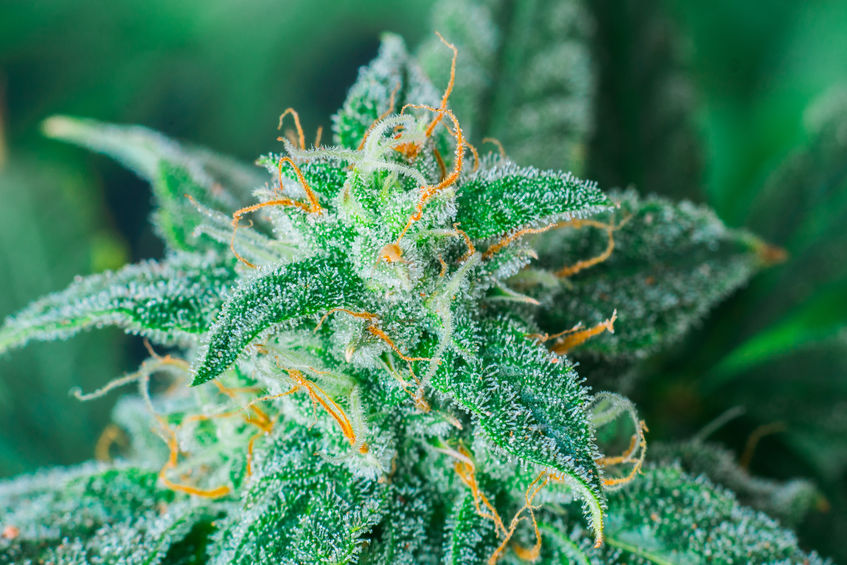
The green rush is on in the Sooner State.
Oklahoma–renowned for its once harsh possession penalties–is now a land of opportunity for medical cannabis businesses. Among the nation’s most progressive medical cannabis programs, Oklahoma has hit the ground running in only six months and is light years ahead of other states delayed by stagnating legislation.
____________________________
One of Oklahoma’s greatest differentiators is its reciprocity program that allows patients with out-of-state medical cannabis cards to qualify for renewable, temporary licenses.
____________________________
Opportunities Abound
The Oklahoma medical cannabis market could realize $250 million in annual sales in its first few years. According to the Oklahoma Medical Marijuana Authority, more than 2,200 business licenses had been issued, with an approved patient pool of more than 24,000 as of December, 2018. This speed-to-market is attributed to the fact that SQ 788 bypassed a special legislative session likely to have imposed restrictions, but instead prioritized patient-needs to get immediate access to cannabis treatments. The result is that there is no limit on business licenses, and doctors are free to recommend medical cannabis to patients for any condition they deem appropriate. In addition, the program is all-encompassing, prohibiting municipalities, cities, or counties from opting out.
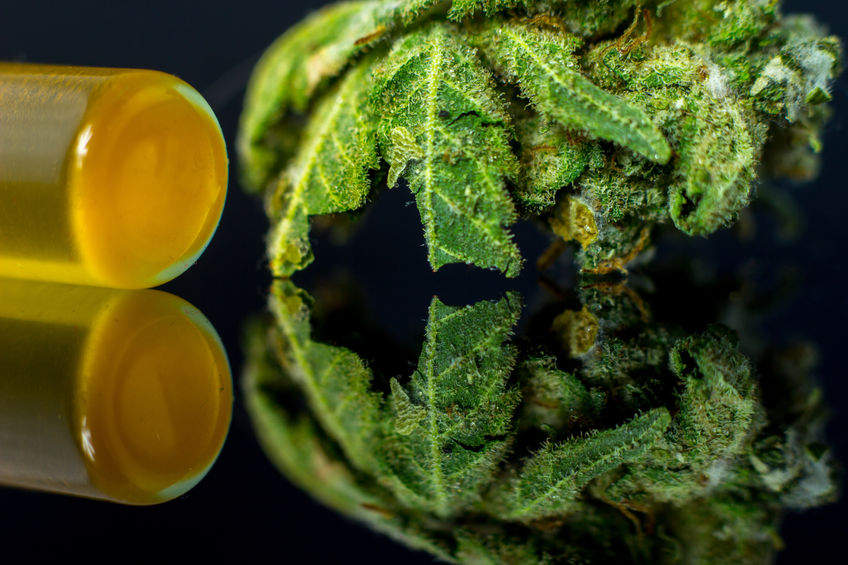
High Retail & Wholesale Prices
Though there’s no cap on business licenses, supply is tight and product demand high, which is good news for dispensaries. Patients are lining up en masse for the state’s program, creating premium value for inventory. An ounce of cannabis flower, for example, averages $400, double the cost of Arizona’s medical cannabis market. Cultivation is prospering as well, with wholesale prices averaging between $3,500 – $4,500 per pound–at least twice that of competing markets.
Reciprocity Program
One of Oklahoma’s greatest differentiators is its reciprocity program that allows patients with out-of-state medical cannabis cards to qualify for renewable, temporary licenses. They cost $100, are valid for 30 days, and permit patients to purchase, use, and even grow cannabis in Oklahoma. This provision is especially enticing for Arkansan customers as a stopgap while that program ramps up.

What’s Next?
Some industry insiders caution that the possibility of over-cultivation and low prices will drive down retail and wholesale prices as it’s happened in other markets. Still, with so much success in its nascent stage and the evolution of regulations, Oklahoma may find a way to stabilize supply, increase demand, and sustain momentum.
The Advantages of Integrating Processing into Your Cannabusiness

Processing or cannabis extraction is emerging as a promising growth area for cannabis businesses, opening opportunities for vertical integration. Scientific and technological innovation are taking extraction to new heights, converting the raw material of cannabis into a cornucopia of usable forms. Christian Sweeney, Director of Science and Technology at Cannabistry Labs, which develops top-of-the-line extraction methods, identifies processing as one of the four pillars–along with cultivation, analytics and biochemistry–for developing the optimal cannabis process. It’s only natural that integrating processing into your cannabusiness has many advantages, including the following:
Self-Sufficiency
Vertical integration creates self-sufficiency for cannabis businesses and can help reduce costs. Businesses that grow, process, and sell their product may reduce their dependence on suppliers or other third parties. Colorado Springs-based Strawberry Fields, for example, makes its own products, including vape pens, edibles, and lotions. They are initially contracting with a processor until they obtain the proper equipment, which can change as they incorporate distillation into their services. Strawberry Fields budgets around $3 million annually for processing fees but will spend $200,000 on equipment to bring the function in-house.
“A well-designed cannabis process goes far beyond just extraction, overlapping heavily with cultivation on the front-end and product development on the back-end.”
Diverse Retail Opportunities
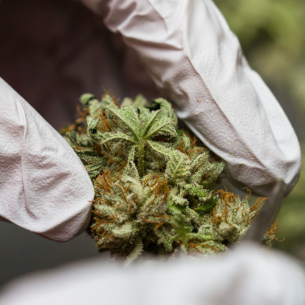
Cannabis products processed and sold onsite have the potential to become a game-changer for the industry. Similar to the farm-to-table restaurant concept, some dispensaries have added kitchens staffed with culinary personnel and food scientists, who are extracting compounds and producing edibles, oils, waxes, shatters, and more. The Mint Dispensary in Tempe, Arizona launched the country’s first full-service cannabis kitchen in October, serving the medical cannabis community. Acres Cannabis recreational dispensary in Las Vegas takes it a step further, featuring a 2,000 square foot open-view kitchen that houses its edible production and cannabis extraction operations. Customers observe the process of removing cannabinoids and terpenes from flower to create cannabis oil, and can buy the product off the shelf.
Better Quality Control
Integrating processing and cultivation at the same site can open the door for better quality control. Well-engineered facilities monitor each piece of equipment and instruments through a Building Automation System or a Direct Digital Controller. These systems provide alerts when a room or piece of equipment is not operating within the programmed specifications or range of tolerance. If both functions are located in one space, the Director of Facilities can supervise operations more efficiently.
The Bottom Line

Cannabis businesses have to keep track of many moving pieces in the name of compliance, growth, and sustainability. Integrating processing into your cannabis business can help you stay ahead, and as Sweeney notes, “A well-designed cannabis process goes far beyond just extraction, overlapping heavily with cultivation on the front-end and product development on the back-end.”

